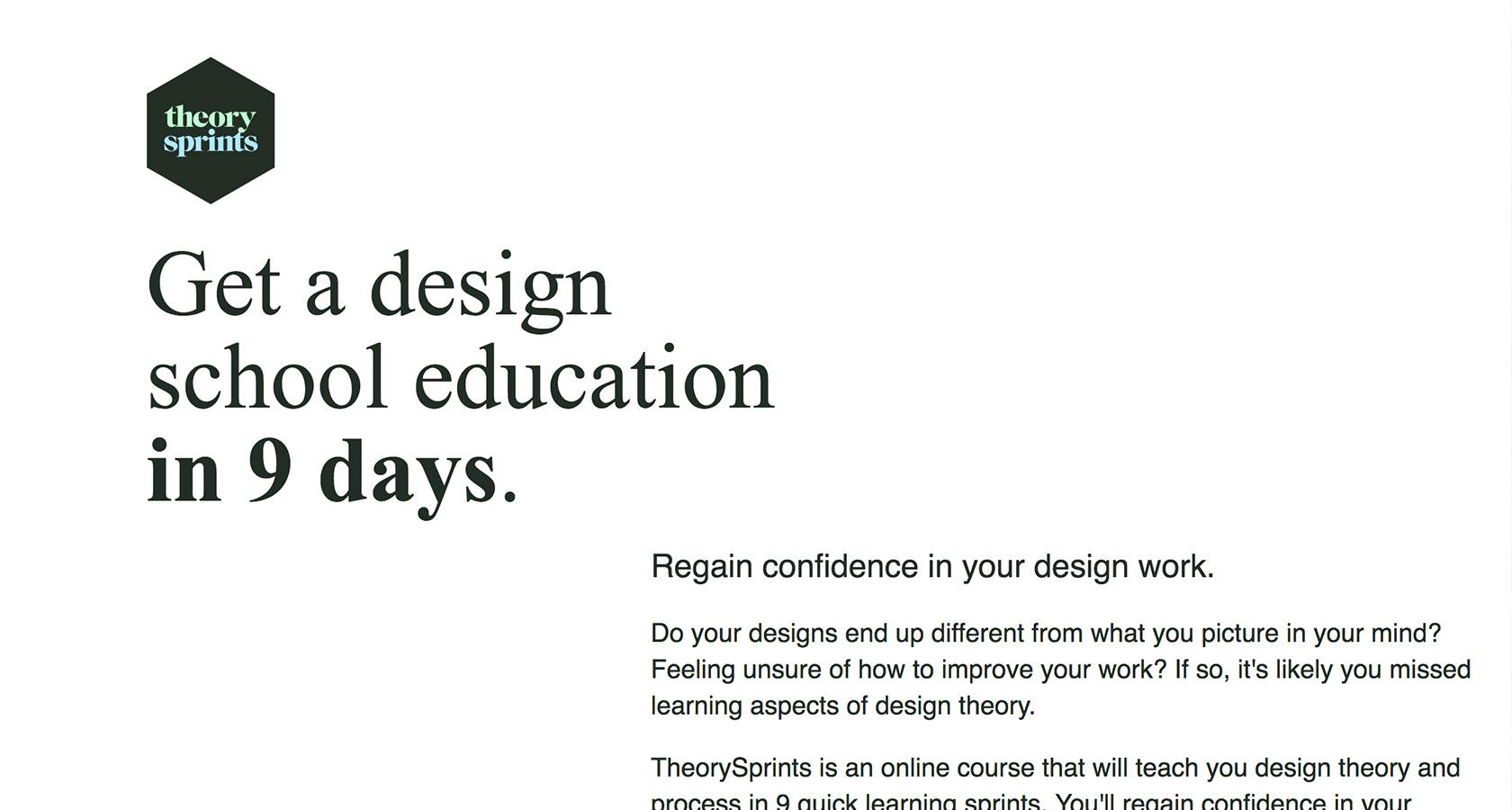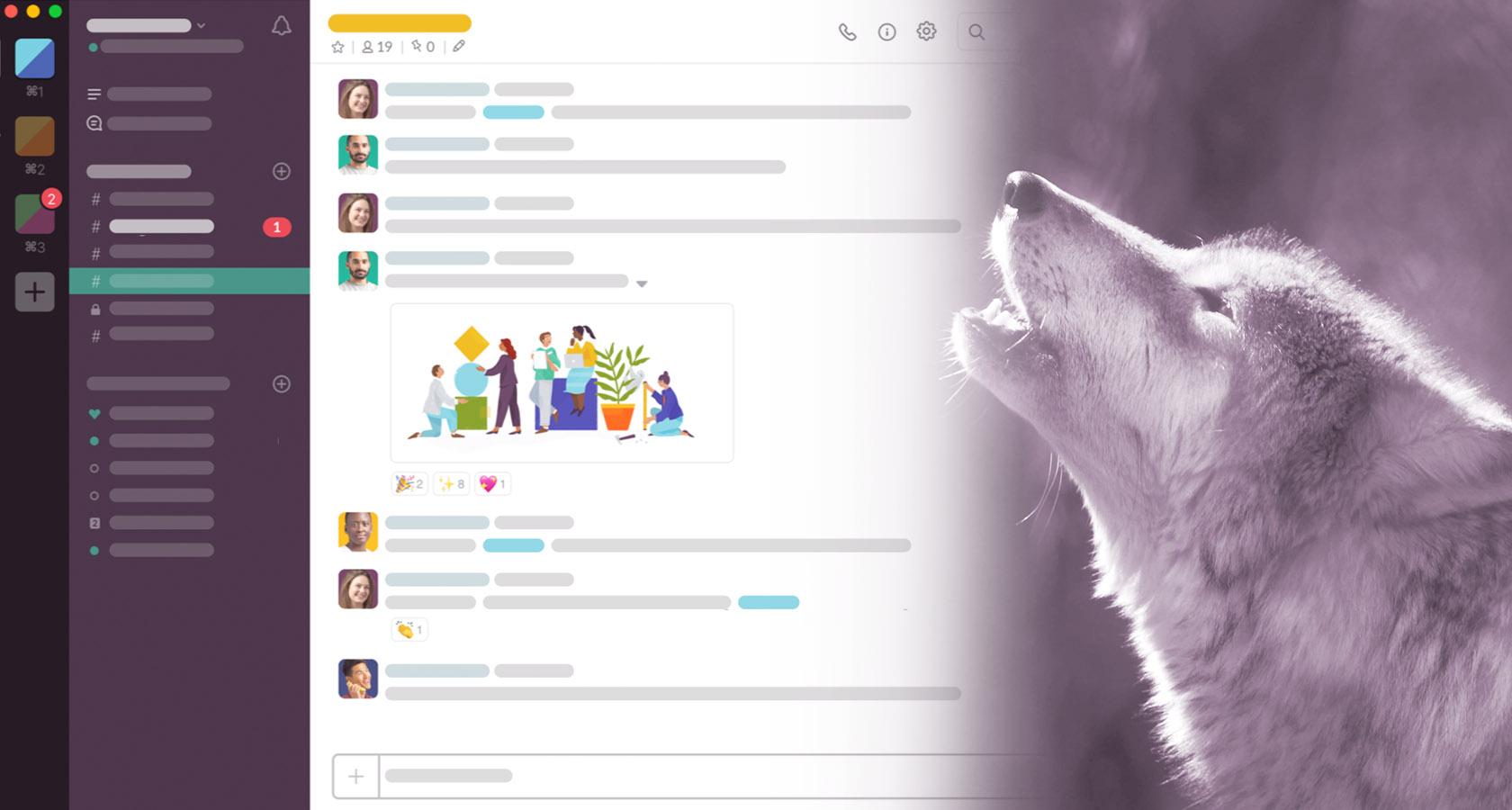Expert Perspectives on the State of Design Education
Aspiring designers have more educational opportunities than any time in history. Do the available options provide worthwhile design training, or are they simply clever money-making schemes?
Aspiring designers have more educational opportunities than any time in history. Do the available options provide worthwhile design training, or are they simply clever money-making schemes?
Micah helps businesses craft meaningful engagement through branding, illustration, and design.
Expertise
Previously on the Toptal Design Blog, we investigated the value of design education and why aspiring designers may not need one. We focused on the traditional, four-year university path that leads to a bachelor’s degree and found an overpriced model teetering between irrelevancy and hopeful reform initiatives.
Our research also revealed an entire ecosystem of divergent educational paths springing to life.
From intensive on-location academies to extensive video libraries and remote mentorships, the options are numerous. Of particular interest is the growing number of “academies” that promise to prepare students for design jobs, often in UX, in exceedingly short time frames (as little as nine days).

It’s clear that design education is changing, but is it for the better?
With so many options, a staggering range of tuition costs, and no way to accurately assess the quality of one design degree over another, how can companies know whether or not the grads they hire are ready to contribute to real-world projects?
Will this oncoming wave of academic alternatives lift designers to new levels of aptitude, or will it crash beneath the burden of unchecked momentum and exaggerated marketing?
Design blog editors Miklos Philips and Shane Ketterman have extensive, firsthand knowledge of this still-developing educational realm.
Shane is a UX designer who went the “UX academy” route. While he doesn’t think the model is perfect, he believes it’s a great option for the right designer.
Miklos has considerable experience leading product design teams, and he works as a remote mentor for aspiring design professionals. He sees inherent problems with the current crop of design schools popping up around the globe, especially where profits are placed above students.

Shane: The Pros and Cons of Learning Design Remotely
Shane, you’re no stranger to the world of higher education, but you didn’t follow the traditional path to a four-year degree. You worked at an architecture firm, majored in business leadership, ran a successful blog, and got your MBA before “UX designer” was a blip on your resume’s radar.
It’s been a journey, yet here you are—graduate of an online UX academy, running your own design agency, and publishing user experience articles all over the web.
Once you knew you wanted to pursue a career in UX, why did you decide to get your training through an online academy?
It’s no secret that student debt is high. When you’re an adult with responsibilities (a.k.a. bills) it’s hard to come up with funds for a traditional education. Online learning offers a less costly and more flexible route. You can make small payments and spend less overall. It just made sense.
I’m a driven person who loves to learn. I realized that these programs require a lot of personal initiative, and that excited me. Having an MBA helped, too, because when I went through my master’s program, I was mostly on my own when it came to seeking out answers and finding information. I learned that no one was going to spoon feed me information. If I wanted to find content to help me grow, I had to dig for it—usually without help.
Before I went to design school, I had already been exposed to design projects, and I even volunteered to do design work for free. Having some prior exposure to the field is critical. Without it, I think that students enrolling in these online academies will feel completely lost—there’s just no context to relate the material to.
Tell us about your experience as a remote UX student. What was that like?
Learning remotely allowed me to keep a flexible work schedule, study from anywhere, and absorb the material at my own pace. On the downside, there wasn’t a cohort to learn with, so it was more isolating. I found myself relying on tools like Slack for interaction with other students, and a lot of the communication in my program was done via messaging tools. For some people, this is a real downer, especially for those who need in-person validation.
One thing I did was start a Slack study group. I’d say it was a minor success. Most students are adults with careers, and they don’t have time to contribute to a study group. It fell on me to keep conversations going and get people involved, but there were some moments where students would collaborate and help each other. That was a huge value in my opinion.

Now that you’re on this side of the experience, when you look back, was it everything you hoped it would be?
I had a great experience, but it wasn’t everything I thought it would be—mostly in terms of interactions with other students. Going back to the cons of these programs, this one hits the hardest because you’re largely on your own. Even if you try to participate in forums or start your own study group, these programs are mostly made up of adults switching careers. Extra socializing with fellow students isn’t a priority.
I believe that the onus is on the individual to make the most of the online learning experience. It’s up to you to perform above and beyond.
You have to have a sense of what you want to be doing after the program, and you have to muster the confidence to start doing that work early on by volunteering to do projects for people you know, doing work on places like Upwork, and putting yourself out there even if you are new.
What are some of the unique advantages of learning UX design remotely?
Having a mentor to chat with weekly is definitely an advantage. You get to sit down with an expert, someone with actual industry experience, and ask questions, hear stories, and be exposed to wisdom you wouldn’t normally have access to.
There’s not a lot of fluff in these programs. They deliver most of the essential design lessons, and if you’re an adult with some college experience under your belt, then you’ll have most of the general education out of the way so you can really focus on what you need to get your career going.
Miklos: Where Design “Academies” Fall Short
Miklos, I’m not trying to start a compliment session here, but I think it’s important that we make something clear, especially given the nature of the topic: When it comes to design, you’re no rookie.
You’ve got decades of professional experience working for well-known corporations, been published extensively, obtained all kinds of titles and licenses, and you mentor aspiring UX designers. Long story short, you know what it takes to swim in the deep waters of design, and you’ve made it a priority to help others learn to do so as well.
Which makes me wonder, how’d you get into mentoring design hopefuls?
After working in the industry for many years, I joined the IxDA in Los Angeles and then the UXPA in New York to see if they had a mentor program where I could help aspiring designers—”send the elevator back down” as they say. The UXPA has a mentor program, and I decided to join in order to give back. Since then, I also joined Springboard, an online education startup where I’m currently an active mentor with three mentees.

You’ve led design teams at multiple organizations; what’s one thing rookie designers consistently lack?
When it comes to designer-grads, one major issue where there’s ample room for improvement is acquiring soft skills (communication, presentation, interpersonal, etc.) and having teamwork experience.
Most designers just want to design. However, designing in today’s workplace involves much more than crafting pretty UIs alone in a corner. You will never work in a blissful designer silo. Working with multidisciplinary teams requires all kinds of finely tuned soft skills.
Designers have to be able to design within a team. When getting their first job, a freshly-minted designer may be joining a large design department at a Fortune 2000 company, or they might catch on with a small agency team, or they could work solo at a startup. Each of these situations will have different demands and will require a unique approach.

Junior designers have to know how to function effectively in a multidisciplinary environment. If they can’t, they won’t provide value. For instance, can they work on a product team with a product manager? Can they work with a developer and effectively communicate design decisions to them?
They will be questioned and scrutinized at every touch-point, and this is something that many educational institutions don’t prepare students for. You can really only learn these soft skills on the job.
I would advise junior designers to get an internship or some other gig shadowing a more senior designer in a real-life work situation so they can be exposed to this important aspect of the job.
Also, I recommend going to meetups and industry events and talking to other designers who can share war stories, or seek out professional industry associations such as the UXPA. They’re in most major metropolitan areas and have mentorship programs where a senior designer will take a mentee under their wing. These programs are typically six months long, and they’re beneficial because they allow junior designers to work on specific limitations and knowledge gaps under the guidance of someone who’s been through the fire.

The benefits of seeking out a mentor are real. I know because of an experience I had mentoring at the New York UXPA for six months. My mentee was looking for design leadership advice, and he went from practically zero to hero in a year’s time, growing exponentially and landing a substantial design manager job at a reputable firm.
And, in your experience as a mentor, do these academies address students’ lack of soft skills??
Absolutely not. Design students need to develop an ability to convincingly present and rationalize design work to clients. Even good design can be poorly received if the client doesn’t understand what’s being presented. Students think, “I did good work, so everyone should love it.” We all know that’s not how it works, but online academies typically don’t prepare students for this kind of reality.
But there is light at the end of the tunnel. I’m seeing some blips on the radar when it comes to teaching real-world soft skills at a number of design education organizations—whether it be a 12-week “intensive,” six-month course, or a four-year university education.
As you’ve mentored students, what’s the one thing that’s consistently shocked you about these academies?
Most design academies don’t adequately train students for real-world jobs. Couple that with unrealistic expectations set by the schools—“Our 12-week course will launch your design career!”—and you’re looking at a double-whammy disaster:
- The student will be greatly disappointed when they can’t land a job.
- And even when they’re able to get a design job, they’ll be ill-equipped and could run into problems with managers and team members.
At the risk of sounding repetitive, the one thing that stands out as sorely lacking is training aspiring designers to work with other people. Schools tend to focus on theory, process, industry “lingo,” and deliverables. All those things are necessary, but a practical side also needs to be taught.
Miklos: Design Education Must Evolve Globally
Miklos, you’ve led design teams and advised mentees both in person and remotely, but your interactions haven’t been limited to US-based designers. You’ve worked with a global talent pool, including designers from locations that are quite literally “remote.”
Up to this point, we’ve talked a lot about education from a US-based perspective. How do you see design education evolving on a global level?
Design education is moving from physical campuses to the web. Increasingly, it’s able to reach into the far corners of the world.
What would be great is offering design courses in different languages. Not only that, but courses could be tailored to local customs and cultures. Not everyone in the world needs to be taught design from a US perspective. I had mentees from Hong Kong and Saudi Arabia, for instance, where the idea of a “design culture” isn’t as prevalent, especially not UX.
I don’t see why I should mentor design students who aren’t from the west and expect them to adopt a western mindset (that’s all I know of course) when our way of working in design often isn’t relevant in their countries.

What are some obstacles and issues that will arise as these academies and online-alternatives reach a more global student base?
I could see issues with language and culture clash. Maybe a student wants to work in another country at the conclusion of the course. How do we prepare them for that?
A student in China, for example, will face a very different work environment in the United States, culturally speaking. But this is also where local industry mentors can help.
Shane: Students Share Responsibility for Their Own Development
Alright Shane, you and Miklos have shared your personal experience in design education, and we’ve asked some big-picture questions about the global development of online design training. Now, I’d like to focus on the segment of people who are considering some form of alternative design education, be that online or on-site.
In your opinion, what kind of person benefits from this path?
I don’t want this to sound too narrow, because the beauty of self-initiated education (or alternative design education) is that it allows all kinds of people from all kinds of circumstances to learn and thrive. Still, I think there are some common traits that can be highlighted.
- Prior work experience. Having a job doesn’t teach you how to design, but it does teach you how to interact with coworkers, take direction, complete tasks, learn new skills—on and on. Design is a profession, not a hobby, so if you’re going to succeed in the field, you need to know what it’s like to hold down a job.
- Independent and motivated. Every day, there will be a thousand reasons not to study, not to research, not to work on a project. You’ll have to regularly carve out focused time and track down answers when you can’t find them in the curriculum.
- Able to devote time. Learning takes time and consistency, and I’d argue that learning design requires more time and consistency than most disciplines. There’s just so much that goes into making things for people to use, and if you can’t devote time to learning what those things are, you won’t succeed as a designer.
- Willing to tackle real-world projects. At some point, you’ll have to move on from the safe confines of class projects and gain exposure to real-world work. Even if that means doing some pro-bono work, do it. There’s no substitute for working with real clients—taking their feedback, questions, and criticisms and using them to refine your work.
- Tenacity. You don’t need to be a growling lunatic, but to learn the fundamentals of design and launch a career, you’ve gotta have some grit. You’re going to fail, you’re going to make dumb mistakes, and people will let you know that your work isn’t very good. It’s part of the process, but that’s what makes design so rewarding. You try, fail, learn, and repeat. Over time, you grow.
Shane: Student Debt Will Drive the Future of Design Education
Shane, as you know, designers are sometimes mistaken for fortune-tellers. While we may have the ability to bring things into existence that weren’t there before, we sadly can’t predict the future.
That said, I’d like you to try…

How do you envision design education will evolve? Will there be a primary model to emerge or many disparate models?
I see more people going the route of alternative education as student debt rises and freelancing becomes a more accepted career choice. The traditional, four-year path on a physical campus continues to make less and less sense.
That said, I don’t necessarily see a primary model emerging, but there will probably be many variants of the online model—though I see less bootcamp and more lengthy, detailed programs.
I also envision more internships and real-world work integrated into schooling. Many trades and professions are lightyears ahead of the design world when it comes to the valuable practice of on-the-job training.
Miklos: Correcting the Course of Design Education
Miklos, one of the great things about design is that we don’t just identify problems, we also develop and execute solutions. In talking about design education, it’s easy to find flaws, but it’s the system we’ve got, so we ought to do the best we can to improve it.
So far, you’ve highlighted a lot of issues, but what are some practical steps of improvement that institutions can take if they’re serious about preparing students for a design career?
For one: institutions ought to hire industry people to consult and advise them on their design curriculum. Also, invite world-class mentors to work with students in parallel with their learning.
This one is vital, even sad. Time and again at design “academies” (that I won’t name), I’ve seen students learning tools and concepts that are completely outdated. I’m talking years behind. That’s not going to prepare students to land a solid design job at a real company upon graduation.
Please stop offering nine-day and 12-week courses in UX. Basically, students are just buying a certificate, but it’s useless. These programs are purely designed to “productize” education and attract people with low fees that will boost the company’s bottom line. They’re designed for quantity over quality. No industry professional takes those types of 12-week “UX Design Certificates” seriously.

Instead of exalting profits, focus on responsibly preparing design students so that they can thrive over the course of their careers. I hate to let the cat out of the bag, but a lot of the VC-financed edu-tech startups are very much profit and growth-driven, not “student-needs driven.”
I understand they have two masters to serve: Investors who want to see the company grow and students who want to obtain a solid education. Make the choice to serve the students first in everything you do.
Is there a beneficial model that you think will become more prominent? What will it look like?
Brick-and-mortar design education institutions are going the way of the dinosaurs. They’re limited by geography and class sizes. They’re relics of the past, echoes of the industrial age, similar to factories, offices, retailers, and so on.
Looking to the future, the best design schools may end up being those that combine personalized, online courses (at varying depths) with an awareness of local languages, customs, and cultures.
A degree from a reputable design school that provides substantial training in theory and practice, along with mentorships and involvement with professional associations (UXPA, IXD, etc.), will go a long way in helping to prepare grads for real-world workplace scenarios.
Design Education Must Change If It’s to Survive
It’s an exciting time to be an aspiring designer. The field is opening to a wider segment of the global population, and access to information, training materials, and mentors continues to increase. While barriers still exist, there’s a sense that opportunities to break into the field are very much there for the taking—in a way that they’ve never been before.
That’s not to say it’s all upward and onward.
Convenience has the tendency to foster shallow academic investigation and may lead to isolation. Design students have more knowledge available than they could ever hope for, but they need context to make it useful.
Quick turnaround courses and online academies may prompt design hopefuls to stop short of meaningful, personal interaction with mentors and cohorts. Email exchanges and message boards are helpful, but firsthand experience as an intern or a weekly sit-down with an industry-tested pro will yield valuable wisdom that can’t be extracted from a video library.
We live in an age of change and work in an industry built on the premise of adapting to change. We are rethinkers and refiners. As such, it is a good thing that our model of education is evolving. If we are stagnant, we are left behind.
The coming paradigm of design education isn’t exactly clear, but some realities remain resolute. If aspiring designers hope to start a fruitful career, they must take the initiative for their training, learn to graciously interact with peers, and seek counsel from trustworthy design mentors.
Further Reading on the Toptal Blog:
Understanding the basics
Do I need a degree to be a UX designer?
A degree is not always required to land a job as a UX designer, but in many cases, having some sort of proof of training will help you get hired. Also, designers often switch disciplines. So if you start in graphic design, you may be able to learn about UX principles and eventually land a UX job.
What skills do you need to be a UX designer?
UX education must be comprehensive, but one of the main things UX designers need to know how to do is perform and interpret user research. It’s also important to weigh design fundamentals vs. tools because design tools change so often. Ultimately, the right education makes you a more valuable designer.
How do I learn UX?
There’s no one way to learn UX design, but there’s one important factor that successful UX students have in common—they learn from other experienced UX design professionals. Whether in a university, an internship, or an online course, the best way to learn UX is through hands-on projects and constructive feedback.
What is the role of a UX designer?
UX designers fill a number of different roles in a wide array of industries, all with the goal of improving the way users engage with digital products. They research behavior, audit digital products, perform heuristic evaluations, design and implement information architecture strategies and more.
Micah Bowers
Vancouver, WA, United States
Member since January 3, 2016
About the author
Micah helps businesses craft meaningful engagement through branding, illustration, and design.

